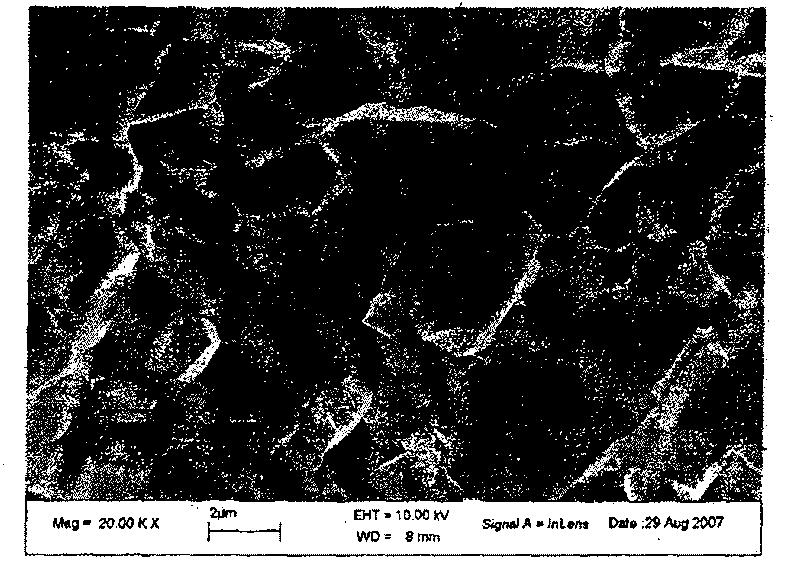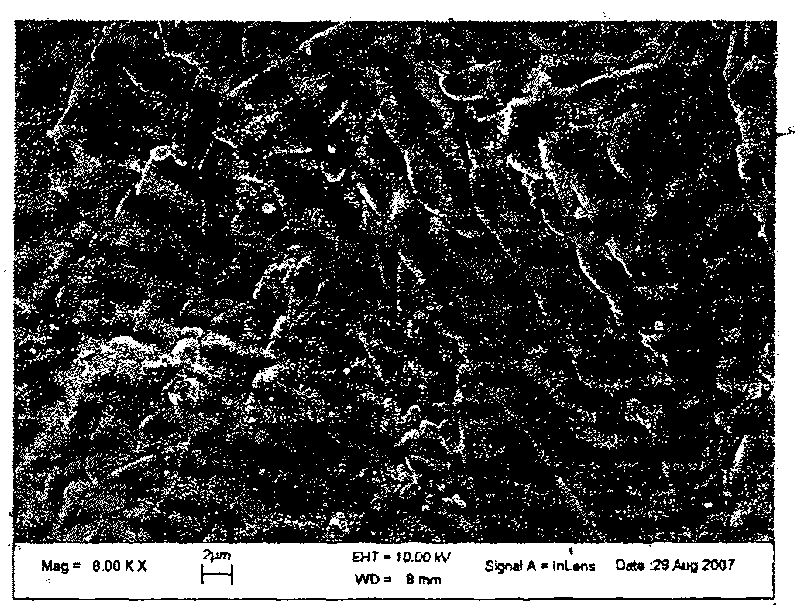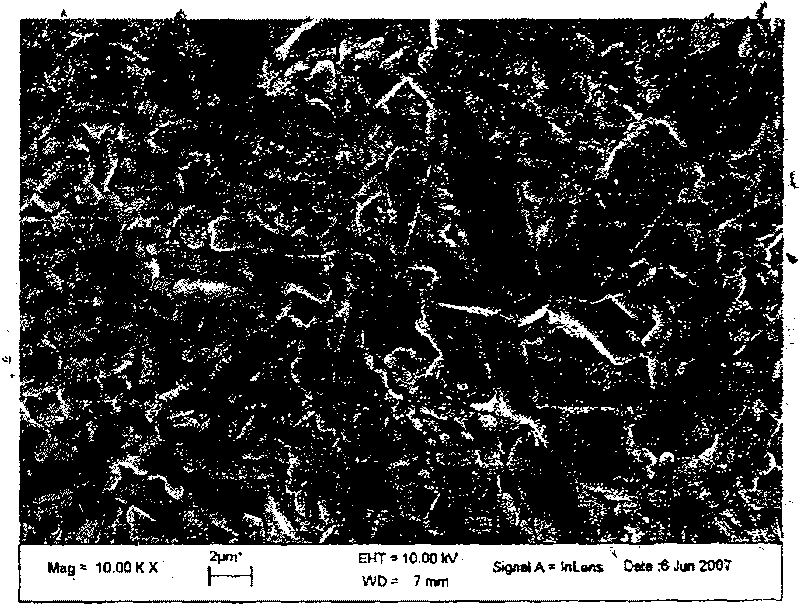Method for preparing in-situ self-toughening alumina ceramics
A self-toughening technology for alumina ceramics, applied in the field of preparation of in-situ self-toughened alumina ceramics, can solve the problem of high cost and achieve simple and controllable equipment and processes
- Summary
- Abstract
- Description
- Claims
- Application Information
AI Technical Summary
Problems solved by technology
Method used
Image
Examples
Embodiment 1
[0025] Weigh the initial raw material 40g Al 2 o 3 and 0.004g Al powder into a nylon resin ball mill jar, use alumina balls with a purity of 99%, add polyethylene glycol with a mass fraction of alumina powder of 1‰ and 250mL alcohol, and perform wet ball milling in a high-energy ball mill for 8 hours . Put the mixture after high-energy ball milling into a 99% alumina ceramic crucible, dry it in an oven at 50°C to obtain a uniformly mixed powder, shape it with various molding methods, and sinter it at 1550°C in an ordinary sintering furnace under an air atmosphere. Hours, a single-phase alumina ceramic with in-situ growth of long columnar and plate-like crystals is obtained, and its typical structure is as follows figure 1 shown. Depend on figure 1 It can be seen that the prepared alumina ceramic grains have appeared tabular crystals or long columnar crystals with an aspect ratio greater than 2.
Embodiment 2
[0027] Weigh the initial raw material 40g Al 2 o 3 and 0.02g Al powder into a nylon resin ball mill jar, use alumina grinding balls with a purity of 99%, add polyethylene glycol with a mass fraction of alumina powder of 5‰ and 250mL alcohol, and perform wet ball milling in a high-energy ball mill for 10 hours . Put the mixture after high-energy ball milling into a 99% alumina ceramic crucible, and dry it in an oven at 50°C to obtain a uniformly mixed powder, which is formed by cold isostatic pressing and sintered at 1580°C in an ordinary sintering furnace under an air atmosphere. Hours, a single-phase alumina ceramic with in-situ growth of long columnar and plate-like crystals is obtained, and its typical structure is as follows figure 2 shown. Depend on figure 2 It can be seen that there are long columnar and plate-like crystals with a large area as shown by the arrows, and these abnormally grown grains form a certain degree of interpenetrating network structure, the lo...
Embodiment 3
[0029] Weigh the initial raw material 40g Al 2 o 3 and 0.04g Al powder into a nylon resin ball mill jar, use alumina grinding balls with a purity of 99%, add polyethylene glycol with a mass fraction of alumina powder 1% and 250mL alcohol, and perform wet ball milling in a high-energy ball mill for 12 hours . Put the mixture after high-energy ball milling into a 99 alumina ceramic crucible, dry it in an oven at 50°C to obtain a uniformly mixed powder, shape it by injection molding, and sinter at 1560°C for 3 hours in an ordinary sintering furnace under an air atmosphere , to obtain single-phase alumina ceramics with in-situ growth of long columnar and plate-like crystals, and its typical structure is as follows image 3 shown. Depend on image 3 It can be seen that a large area of long columnar and plate-like crystals appears, as shown by the arrows, these irregularly grown grains form a certain degree of interpenetrating network structure, the longest grain aspect ratio ...
PUM
| Property | Measurement | Unit |
|---|---|---|
| flexural strength | aaaaa | aaaaa |
Abstract
Description
Claims
Application Information
 Login to View More
Login to View More - R&D
- Intellectual Property
- Life Sciences
- Materials
- Tech Scout
- Unparalleled Data Quality
- Higher Quality Content
- 60% Fewer Hallucinations
Browse by: Latest US Patents, China's latest patents, Technical Efficacy Thesaurus, Application Domain, Technology Topic, Popular Technical Reports.
© 2025 PatSnap. All rights reserved.Legal|Privacy policy|Modern Slavery Act Transparency Statement|Sitemap|About US| Contact US: help@patsnap.com



